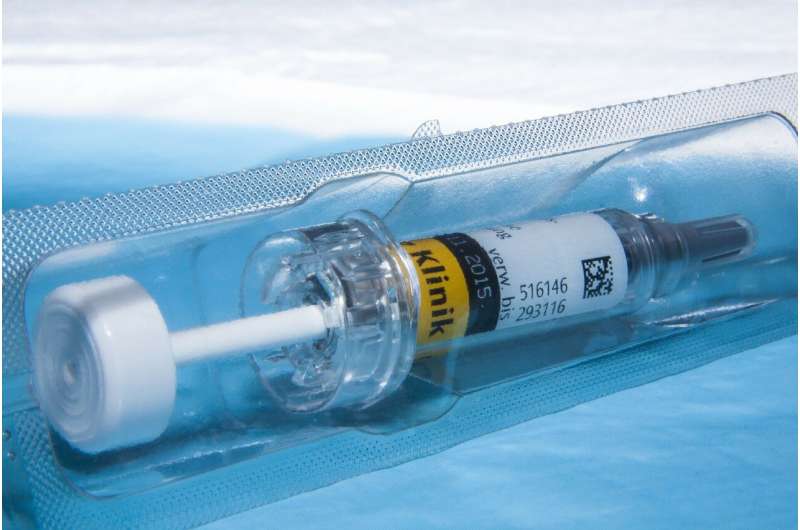Single Antibody Identified as Cause of Severe Blood Thinner Reaction

New research identifies a single antibody as the cause of life-threatening reactions to heparin, revealing potential for more accurate diagnosis and targeted treatment of HIT, a serious blood disorder.
Researchers from McMaster University have uncovered a groundbreaking discovery regarding a rare, yet potentially fatal, immune reaction to the commonly used blood thinner, heparin. This complication, known as heparin-induced thrombocytopenia (HIT), affects approximately 1% of hospitalized patients receiving heparin treatment. Nearly half of these cases result in life-threatening blood clots, which can lead to strokes, heart attacks, amputations, and even death. Detecting and managing HIT promptly are critically important in clinical settings.
Traditionally, it was believed that multiple types of antibodies contributed to the immune response causing HIT. However, recent findings published in the New England Journal of Medicine challenge this view. The study revealed that in all tested patients, only a single antibody was responsible for the disease, while other antibodies acted as a 'smokescreen,' obscuring the true causative agent. This insight allows for a more precise identification of the antibodies involved, which can dramatically improve diagnostic accuracy and treatment strategies.
"This study not only redefines our understanding of HIT but also influences our perception of immune responses overall," said Ishac Nazy, the study's senior author and director of the McMaster Platelet Immunology Laboratory. He explained that previous misconceptions contributed to high false-positive test results and misdiagnoses, leading to unnecessary or harmful treatments. The new findings pave the way for better, targeted therapies and more reliable diagnostic tests.
The research involved analyzing blood samples from nine patients diagnosed with HIT. The scientists discovered that the antibodies targeting platelet factor 4 (PF4)—a protein critical for blood clotting—were monoclonal. This indicates that HIT is primarily driven by a highly specific immune response rather than a broad, generalized one.
"Understanding that a monoclonal antibody causes HIT opens up opportunities to develop specialized tests and treatments tailored to this mechanism," said Jared Treverton, the study's first author. These advancements will benefit hematologists, laboratory specialists, and researchers globally, especially in settings where patients are treated with heparin.
This discovery underscores the importance of fundamental scientific research in advancing clinical care. The collaborative effort included scientists from McMaster's MCTR and the University of Massachusetts Amherst. Overall, this research marks a significant step forward in preventing, diagnosing, and managing a serious blood disorder that can have devastating consequences for patients.
Stay Updated with Mia's Feed
Get the latest health & wellness insights delivered straight to your inbox.
Related Articles
Discovering a Brain-Based Brake Against Binge Drinking in Mice Offers Hope for Future Treatments
Researchers have identified a specific neuronal group in the mouse brain that acts as a natural brake on binge drinking, paving the way for targeted addiction therapies in the future.
Osteoarthritis Management: Bridging the Gap Between Evidence-Based Guidelines and Real-World Practices
Recent research highlights a significant gap between osteoarthritis treatment guidelines and real-world practices, emphasizing the need for better adherence to evidence-based interventions like weight management and patient education.
Scientists Approve AI-Driven Automated Hearing Test for Remote Use
A groundbreaking AI-powered hearing test has been approved, enabling reliable and quick self-assessment of hearing abilities at home without clinical supervision, potentially transforming audiology practices.



